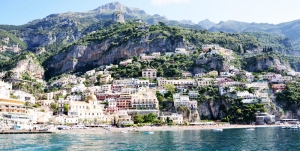Our clients can benefit from personalized Italian courses and lessons, Italian translation/interpreting courses, and other Italian language services such as translation, consulting, or project assistance.
Contemporary Italian, like Spanish, French, Romanian, and Portuguese, is a Romance language based on the vulgar (plebeians’) form of Latin — as opposed to the patricians’ classical Latin. The first documents that were written in proto-Italian appeared in the 10th century; however, “modern Italian” started to become more prominent in the 14th century, initially as a Florentine dialect — perhaps because of the similarities between the Tuscan dialect and Classical Latin. In fact, Italian is the Romance language that most closely resembles Latin (while Romanian is the language that has preserved even more features of Classical Latin grammar). During the Renaissance, the Tuscan dialect was fashioned as classical Italian — yet, the local dialects remained uniquely relevant until the Risorgimento (Italian Unification) of 1861 when the Florentine dialect became the standard language of the new country: Italy.
The musicality of the Italian language, combined with visions of dreamlike landscapes, warm-hearted people, and delicious cuisine, have provided sufficient reasons for many students to study easily and with pleasure in our Italian programs.
“I took lessons with Gabriella for 6 months in hopes of perfecting my Italian in order to communicate with the father of my boyfriend who does not speak English. After 52 hours of lessons, I am about to embark on a vacation with my boyfriend’s family once again. I feel very confident that this time, I’ll be able to speak 100% Italian for the whole week. The lessons were very flexible, allowing me to come after work within a window. I was also able to adjust the content of the lessons to my specific needs as they became apparent. The ability to reschedule lessons when I had plans to go out of town was incredibly helpful for my schedule. Gabriella was even nice enough to help me with a little bit of French when my work sent me to France for a project. The lessons have been extremely helpful and I now feel confident in introducing myself as an Italian speaker. I would recommend Gabriella to anyone hoping to gain insight into a culture and to grow in their language abilities.” Lauren (Marketing Consultant), Italian Immersion Program
Italian is the official language of Italy, San Marino, Switzerland and Vatican City; it is the official language of some parts of Croatia and Slovenia. There is a relatively sizeable number of Italian speakers in Monaco, Somalia, Albania, Argentina, Tunisia, Australia, Belgium, Lebanon, Bosnia, Herzegovina, Brazil, Canada, Costa Rica, Croatia, Malta, Egypt, Eritrea, France, Germany, Israel, Libya, Liechtenstein, Luxembourg, Paraguay, Philippines, Puerto Rico, Saudi Arabia, United Arab Emirates, United Kingdom, the United States and Venezuela (and, of course, it is learnt as an easy 2nd language by many people in Romance countries such as Romania and Spain).
Speaking Italian and becoming familiar with Italian culture and history will help you talk with gregarious Italians and others on your trips, understand opera librettos, and make sense not only of your buonissimo Italian menu, but also of the dramatic topics of all those marvellous paintings and sculptures you will find in Italian museums.
Italy, a country to which so many Americans trace their family roots, will fascinate you with its culture, history, and contemporary life.
Moreover, in recent surveys Italy emerged as Europe’s most desirable retirement destination.
Examples of personalised curricula in the past:
-
Conversational Italian
-
Advanced Italian
-
Professional Italian
-
Contemporary society
-
Classical literature: philological analysis of original readings from Giuseppe di Lampedusa and Umberto Eco
-
Basics of Italian language and culture
-
Italian Business topics
-
Italian Cinematography
-
Cuisines of Italian Regions
Italian is the official language of Italy, San Marino, Switzerland and Vatican City; it is the official language of some parts of Croatia and Slovenia. There is a relatively sizeable number of Italian speakers in Monaco, Somalia, Albania, Argentina, Tunisia, Australia, Belgium, Lebanon, Bosnia, Herzegovina, Brazil, Canada, Costa Rica, Croatia, Malta, Egypt, Eritrea, France, Germany, Israel, Libya, Liechtenstein, Luxembourg, Paraguay, Philippines, Puerto Rico, Saudi Arabia, United Arab Emirates, United Kingdom, the United States and Venezuela (and, of course, it is learnt as an easy 2nd language by many people in Romance countries such as Romania and Spain).
Speaking Italian and becoming familiar with Italian culture and history will help you talk with gregarious Italians and others on your trips, understand opera librettos, and make sense not only of your buonissimo Italian menu, but also of the dramatic topics of all those marvellous paintings and sculptures you will find in Italian museums.
Italy, a country to which so many Americans trace their family roots, will fascinate you with its culture, history, and contemporary life.
Moreover, in recent surveys Italy emerged as Europe’s most desirable retirement destination.
Examples of personalised curricula in the past:
-
Conversational Italian
-
Advanced Italian
-
Professional Italian
-
Contemporary society
-
Classical literature: philological analysis of original readings from Giuseppe di Lampedusa and Umberto Eco
-
Basics of Italian language and culture
-
Italian Business topics
-
Italian Cinematography
-
Cuisines of Italian Regions



